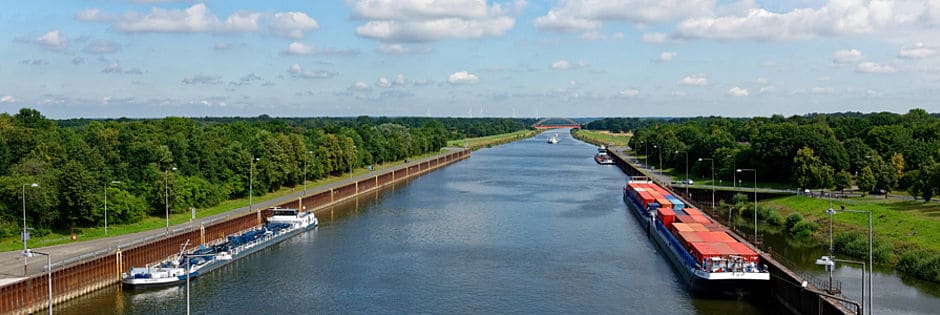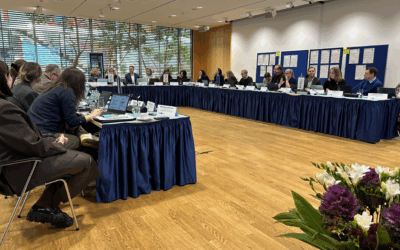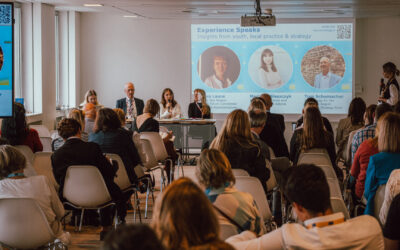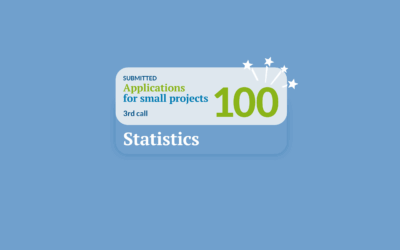A single river barge can carry 40 times the load of a truck. CO2 emissions per ton cargo are up to four times lower for barges than for trucks. And transportation costs are up to six times lower. Despite the obvious benefits in terms of costs and environment, inland waterway transport in the EU accounts for only about 7 % of cargo transport. After some decades of very little development in the Baltic Sea region, inland shipping has gained momentum lately. Baltic Sea region countries are now catching up and making their joint voice heard in European transport politics – in the project EMMA.
Baltic Sea rivers, lakes and canals impose navigational challenges
Baltic Sea region waterways differ considerably from heavily used rivers such as the Rhine or the Danube. The rivers Odra, Vistula or Nemunas as well as the Saimaa canal are comparatively narrow, shallow and winding. This is partly due to the fact that the rivers were not strongly engineered for shipping purposes during the past decades. Ice covers rivers, lakes and canals for several months a year. It is inefficient or even not possible to use standard modern river barges to navigate these waterways.
Technical solutions are in place in the Baltic Sea region to overcome such navigation challenges, but they are not yet widely exchanged and used. “In the EMMA project we bring experts from the different rivers and lakes together to find the best solutions for their individual challenges,” says the project coordinator Stefan Breitenbach from Hafen Hamburg Marketing. Breitenbach has a lot of practical experience with cargo shipping. Trained as a ship broker he organised the cargo of ships for several years, then went on to study economics until he started working for Port of Hamburg Marketing.
Swedish pick up ship convoy concept from southern Baltic countries
One such solution is the push-barge convoy: Up to six small, flat-bottomed barges without self-propeller are lined up in front of a small but strong push unit ship. Such convoys are commonly used on the rivers Elbe in Germany and Odra along the Polish-German border. They are much more flexible than a typical, long Rhine barge for example. When meeting a lock, the barges can be decoupled to be lifted one after the other.
Swedish partners have successfully tested a barge container transport on canals and lakes in the hinterland of Gothenburg within the EMMA project. Johan Lantz, CEO of Avatar Logistics in Norrköping, sums up the test: “I think we have managed to prove to the industry that the barge convoy system is a reliable alternative to truck transportation”. “In Sweden, our long-term aim is to shift several thousand containers per year from road to inland waterway”, says Johan Axiø of the Swedish Transport Administration. The barge convoy approach might also help to put into place new shipping services on Nemunas river in Lithuania – currently there is a lack of transportation means for heavy goods produced in Kaunas, the industrial centre of Lithuania, to the seaport in Klaipeda.
Finns interested in river information systems from Germany
Another solution is to use modern information technology, so called river information systems (RIS). Such systems provide information about water depth, weather, expected waiting times at locks and other navigation conditions. Shipping operators can use this information to optimise transport flows. The Institute of Shipping Economics and Logistics together with the Port of Hamburg Marketing (both Germany) and other EMMA partners are developing RIS further to transfer the system to other countries, e.g. to the Saimaa region in Finland.
Northern countries make ships more winter-proof
How to strengthen inland ship hulls to better resist ice conditions in winter times is investigated by Avatar logistics (Sweden) together with the Finnish Waterway Association, Hamburg University of Technology (Germany) and the Royal Institute of Technology (Sweden). Stronger ship hulls enable inland ships to operate longer during winter time. Ship operators in Poland and Germany hope to gain from this research, too. “The existing knowledge about this topic is very specialised in the different countries”, explains Stefan Breitenbach, “the Interreg project EMMA makes it much easier to find the right partners and bring them together to work on one such research question, resulting in actual implementation projects.”
Speaking with one voice
In addition to the work on the ground, the partners are formulating joint positions when it comes to political decisions and developing transport regulations. Currently, the EU Member States are implementing the Trans-European Transport Network (TEN-T) policy. Just recently, the EMMA project managed to bring together stakeholders from the Nordic and from the south-eastern Baltic Sea to develop joint inputs to the definition process of the “good navigational status”, which is a part of the guidelines for TEN-T implementation. With this input, the experts from the Baltic Sea region not only managed to show the specific conditions (i.e. ice conditions, limited draft in free-flowing rivers) but also some possible solutions such as the barge convoy. “The aim of our joint effort is to define the good navigation status regionally instead of having one general definition that cannot be possibly met in the Baltic Sea region countries”, says Stefan Breitenbach.
With EUR 3.44 million of support from the European Union, the Interreg project EMMA helped five countries around the Baltic Sea identify better inland waterway transport as a common interests, develop a habit of cooperation and thus delivered territorial cohesion. And EMMA is important for the whole macro-region – this is why it is a flagship project of the EU Strategy for the Baltic Sea Region. By continuously cooperating to feed into policy processes, the EMMA partners hope to jointly improve the conditions for inland navigation and thus make the Baltic Sea region better accessible in the long run. And they benefit personally, highlights Stefan Breitenbach: “To me Interreg projects are really inspiring, because you can easily meet people from different countries and backgrounds, speak with them about their viewpoints and challenges and this way learn from their experience.”
Story by Stefanie Maack based on an interview with Stefan Breitenbach (Hamburg Port Marketing e.V.).

Related links
» Project website
» Project Lead Partner: Hafen Hamburg Marketing
Related news
22 Nov 2016
Promoting clean shipping by learning from sulphur regulations







